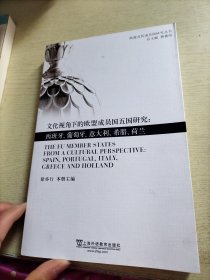
音系学(第2版 英文版)/原版现代语言学丛书
¥ 20 3.2折 ¥ 63 九品
仅1件
湖南怀化
认证卖家担保交易快速发货售后保障
作者菲利普·卡尔、让-皮埃尔·蒙特勒伊 著
出版社上海外语教育出版社
出版时间2016-09
版次2
装帧平装
货号5f
上书时间2024-12-28
- 最新上架
商品详情
- 品相描述:九品
图书标准信息
- 作者 菲利普·卡尔、让-皮埃尔·蒙特勒伊 著
- 出版社 上海外语教育出版社
- 出版时间 2016-09
- 版次 2
- ISBN 9787544645799
- 定价 63.00元
- 装帧 平装
- 开本 16开
- 纸张 胶版纸
- 页数 338页
- 正文语种 英语
- 丛书 原版现代语言学丛书
- 【内容简介】
- 《音系学(第2版 英文版)/原版现代语言学丛书》详细阐释了音系学的概念和理论,第二版新增章节介绍语音权重和优化理论。每章节后附有课后练习、练习答案和扩展阅读,帮助读者全面掌握语音学领域的知识。《音系学(第2版 英文版)/原版现代语言学丛书》的引进将进一步满足广大语言学专业师生实用的语言学教材及课外阅读资料的需求。既可作为语言学入门教材在高校课堂上使用,也可供感兴趣的读者自学阅读,具有很强的可读性和实用性。
- 【目录】
-
Preface to the Second Edition
Preface to the First Edition
Acknowledgements to the Second Edition
Acknowledgements to the First Edition
Revision of Phonetics
1.Consonants
2.Vowels
1 The Phonemic Principle
1.1 The language of phonology
1.2 Phonemic rules
1.3 Phonological representations
1.4 Concluding remarks
Exercises
Further reading
2 Alternations
2.1 The internal structure of words
2.2 Testing hypotheses about rules and representations
2.3 Morphophonological alternations
2.4 Choosing between analyses
2.5 Deletion and insertion
2.6 The ordering of rules
2.7 Concluding remarks
Exercises
Further reading
3 Features, Classes and Systems
3.1 Expressing generalisations
3.2 Features (i)
3.3 General remarks
3.4 Features (ii)
3.5 Features in representations
3.6 Features in rules
3.7 Implicational relationships
Exercises
Notes
Further reading
4 Problems with the Phonemic Principle
4.1 Contrast and neutralisation
4.2 Contrast and the minimal pair
4.3 An alternative to the phonemic principle: generative phonology
Exercises
Further reading
5 The Orgenisation of the Grammar
5.1 The lexicon
5.2 The location of morphology
5.3 The phonological component vs the lexicon
5.4 Summing up
Exercises
Notes
Further reading
6 Abstractness, Psychological Reality and the Phonetics/Phonology Relation
6.1 Ordering relations and rule application in the SPE model
6.2 Absolute neutralisation
6.3 Abstractness and psychological reality
6.4 Underlying representations and naturalness
6.5 Abstractness, phonological change and child language acquisition
Exercises
Further reading
7 The Role of the Lexicon
7.1 Phonology and morphology revisited: lexical phonology
7.2 Lexical and posdexical application
7.3 Structure preservation, abstractness and productivity
7.4 Redundancy and underspecification
Exercises
Notes
Further reading
8 Representations Reconsidered (i): Phonological Structure above the Level of the Segment
8.1 Lexical rules, phonotactics and the syllable
8.2 Syllabification and syllable-based generalisations
8.3 Extrasyllabicity, the CV tier and abstractness
8.4 The CV tier, segment length and complex segments
8.5 Stress assignment, rhythm and the foot
8.6 Symmetry, clash avoidance and the metrical grid
8.7 Prosodic domains and the syntax/phonology relationship
Exercises
Notes
9 Representations Reconsidered (ii): Autosegmental and Subsegmental Phonology
9.1 Nasality, segmental and suprasegmental
9.2 Vowel harmony
9.3 Dominant/recessive harmony
9.4 Feature geometry and subsegmental structure
Exercises
Notes
10 Phonological Weight
10.1 Weight and time
10.2 The basic architecture
10.3 The weight of codas
10.4 The structure of geminates
10.5 Stress-to-weight and weight-to-stress
10.6 Moraic theory and compensatory lengthening
10.7 The word-final weight asymmetry
Exercises
Further reading
11 Optimality Theory
11.1 The basic architecture
11.2 The logic of output-driven models
11.3 Positional constraints
11.4 The factorial typology
11.5 The nature of the input
11.6 The prosody-melody interface
11.7 Positional markedness vs positional faithfulness
11.8 Conclusion
Exercises
Further reading
12 Issues in Optimality
12.1 Opacity: problems
12.2 Output-to-output correspondence
12.3 Re-analysing cyclicity
12.4 Opacity: some proposed answers
12.5 Conclusion
Exercises
Further reading
Feature Specifications for Consonants
Sample Answers to Exercises
References
Subject Index
Language Index
点击展开
点击收起
— 没有更多了 —





















以下为对购买帮助不大的评价